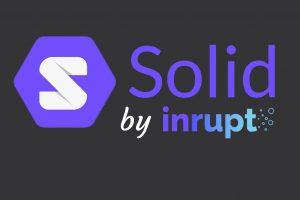” The Green Data hub”- conversing with Nina Popanton
In a quest to gain a comprehensive understanding of data spaces, their main players, and their future trajectory, our team has been actively engaging with key actors in the dataspace ecosystem. As part of this endeavor, our COO Louis recently conducted a captivating interview with Nina Popanton. In this second post in a series of three, we explore the Green Data Hub (GDH), a project initiated by the Data Intelligence Initiative (DIO) in Austria. The GDH aims to create diverse use cases and connect stakeholders from various industries within the dataspace concept. We spoke with Nina Popanton, who participated in setting up the Green Data Hub, to gain insights into the purpose of the project, its stakeholders, and the matchmaking efforts involved.
Louis Cousin: You were part of setting up the GDH. Can you tell us about it and what you were doing and its purpose within the dataspace ?
Nina Popanton: The Green Data Hub, initiated by the Data Intelligence Initiative, focuses on the four action fields of the Austrian Federal Ministry for Climate Action, Environment, Mobility, Energy, Innovation, and Technology (BMK). Its purpose is to bring together stakeholders from various industries to co-create diverse use cases. The use cases focus on four key themes: energy transition, mobility transition, circular economy and digital twin. The goal is to create four data spaces in these fields to generate added value for the entire economic landscape of Austria and Europe. The project supports stakeholders (research institutions, public bodies, economic players) throughout the initiation phase, aiming to address pain points and find common ground for collaborative use cases.
LC: Is the Green Data Hub exclusively led by the government?
NP: The Green Data Hub is governmentally initiated and provided with project-based financing via FFG, the Austrian Research Promotion Agency. However, it also receives non-financial support from major economic players who participate in the use cases. Research partners collaborate to gather valuable findings from this novel approach.
LC: interested in participating in the Green Data Hub?
NP: The interest in participating varies among companies. In many cases, top-level management, such as Chief Information Officers (CIO) or Chief Data Officers (CDO), recognize the potential value of collaborative data usage and the need for data-driven use cases. Innovation managers and individuals with diverse roles also show interest. The aim is to involve all stakeholders and ensure everyone is on board to avoid project failure due to lack of support from top-level management.
LC: How do you work together?
NP: Matchmaking is a major endeavor in the Green Data Hub. The GDH team facilitates connections between companies and institutions that require specific data and those that possess it. The goal is to ensure that all participants and institutions benefit from these connections. The vision is not only to utilize existing data but also to find ways to monetize it. The Green Data Hub works towards creating value for all stakeholders involved.
LC: How do you make this match happen?
NP: In the case of the Green Data Hub, matchmaking involves a classical networking approach. DIO working in the GHD has a deep understanding of their members, their fields, and what they can offer or require. They make efforts to match companies and institutions based on their needs and capabilities. Additionally, they provide support through data stewards who assist in creating and maintaining data documentation.
LC: Did the organizations commit to the matchmaking process?
NP: Yes, the organizations involved in the Green Data Hub committed to the matchmaking process. When required by stakeholders, the team provided guidance and assistance to ensure their data was properly prepared and aligned with the requirements of data spaces.LC: Thank you, Nina, for your insights and for sharing your experience in the data space ecosystem. It’s been really informative and interesting to hear about your work.



